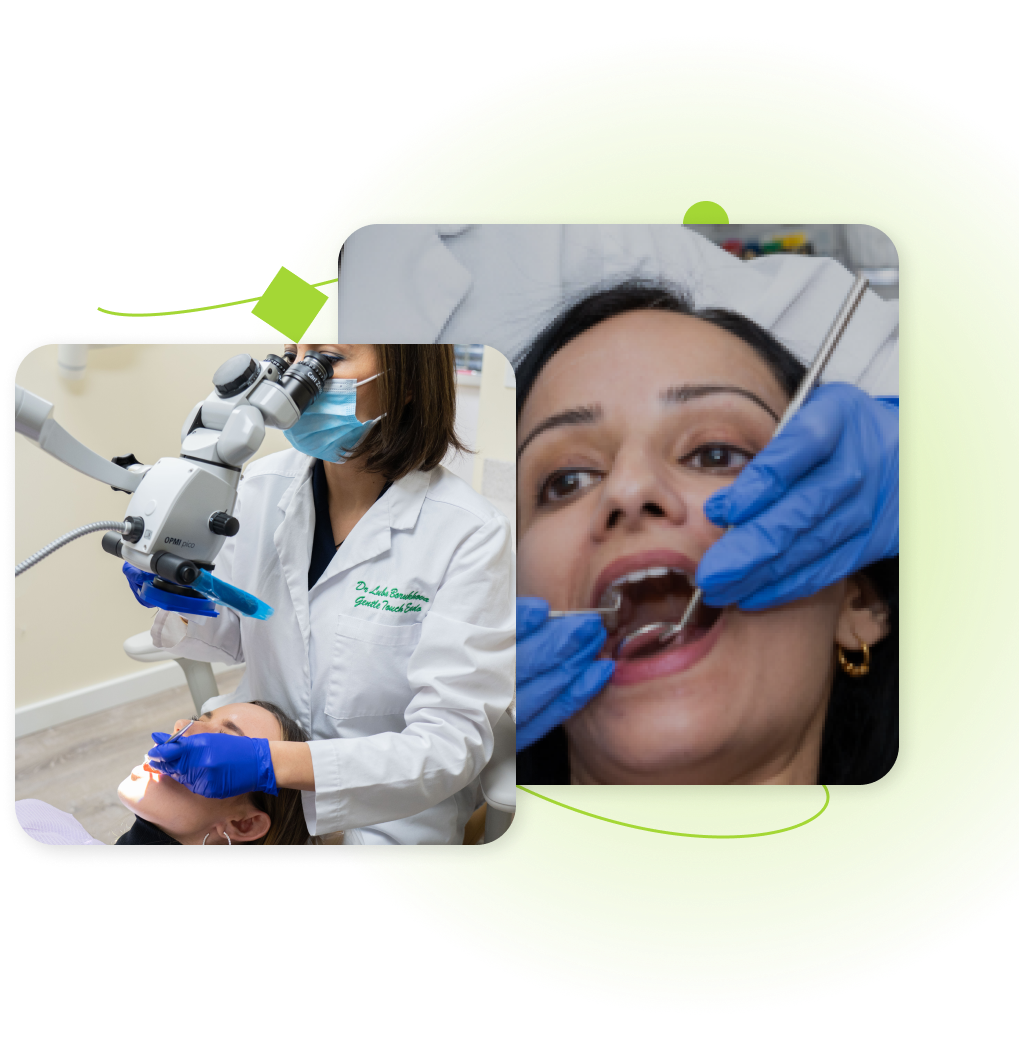A root canal is one of the most common dental procedures performed. At the center of your tooth is the dental pulp. The dental pulp is a collection of blood vessels that help to build the surrounding tooth.
Infection of the pulp can be caused by trauma to the tooth, deep decay, cracks and chips, or repeated dental procedures.
Symptoms of the infection can be identified as visible injury or swelling of the tooth, sensitivity to temperature, or pain in the tooth and gums. This simple treatment can save your natural teeth and prevent the need of dental implants or bridges.
Infection of the pulp can be caused by trauma to the tooth, deep decay, cracks and chips, or repeated dental procedures.
Symptoms of the infection can be identified as visible injury or swelling of the tooth, sensitivity to temperature, or pain in the tooth and gums. This simple treatment can save your natural teeth and prevent the need of dental implants or bridges.
How is a root canal performed?
If you experience any of these symptoms, your dentist will most likely recommend non-surgical treatment to eliminate the diseased pulp. This injured pulp is removed and the root canal system is thoroughly cleaned and sealed. This therapy usually involves local anesthesia and may be completed in one or more visits depending on the treatment required. Success for this type of treatment occurs in about 90% of cases. If your tooth is not amenable to endodontic treatment or the chance of success is unfavorable, you will be informed at the time of consultation or when a complication becomes evident during or after treatment. We use local anesthesia to eliminate discomfort. You will be able to drive home after your treatment, and you probably will be comfortable returning to your normal routine.
After the root canal procedure, we recommend no chewing on the tooth until a permanent restoration is placed. Please make an appointment to your dentist within 30 days to have the restoration placed.
After the root canal procedure, we recommend no chewing on the tooth until a permanent restoration is placed. Please make an appointment to your dentist within 30 days to have the restoration placed.


